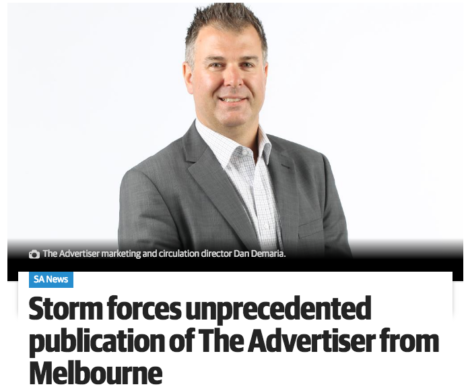How South Australian media coped with ‘unprecedented’ conditions of a State-wide power blackout
Severe storms that lashed South Australia have created unprecedented demand from media outlets for information by the public, but also posed unprecedented challenges thanks to a total power blackout.
Power across the entire State went out just before 4:00pm, creating problems for the staff at the Adelaide Advertiser and news crews at the free-to-air broadcasters as they prepared for the evening bulletins.
Overnight metro ratings show Seven News drew 1,000 viewers in Adelaide while Nine News recorded a zero figure, with almost everyone in the State unable to watch TV.



Fairfax Media’s regional SA publications were also delayed due to an outage at the Murray Bridge printing press, but power returned around 8.30pm and staff stayed until 3am to get the job done. (See http://www.murrayvalleystandar.....wer-outage.)
Thanks to the efforts of printing staff and delivery drivers, I believe most or all papers are now out, most with a four-page wraparound featuring storm photos from around the state. (See https://twitter.com/PeriStrathearn/status/781294002985324544.) Hopefully some shops will be open in Port Pirie, Port Augusta, Whyalla etc, despite the outage, so locals can still pick up copies!
I watched the Nine News Adelaide livestream over the internet here in Brisbane, while on the phone to my parents in Adelaide, so you can add that to your viewer figures! Well done to everyone involved in the media to get the news out under some adverse conditions.
Well done to ABC 891 who were the key mouthpiece and were the most relevant media source under the circumstances.
Also, well done to the Triple M Rush Hour – entertaining coverage as the only local show on air during the black outs in the afternoon slot.